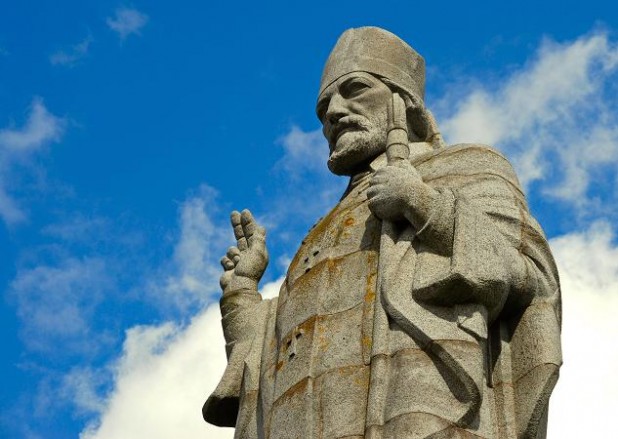
Somewhere between 410 – 420 AD St Patrick first came to Ireland as a slave. Irish raiders had been attacking the British western coastline for centuries particularly in places such as Wales and Cornwall, they captured a young Patrick and brought him back to Ireland where he spent the next 6 years in Ireland tending the flock of a druid. According to the Confessio, an autobiography detailing his early life, one night he received a message from God through his dreams telling him to get a boat back to Britain and take up the ministry.
Trained in France, Patrick was sent back to Britain to stamp out the Peligian heresy, a heresy which maintained that humans were not born with original sin. It was an interesting and highly controversial theory, Peligius (despite his Romanised name) was most likely actually Irish, his argument was that you did not need to be baptised to see Heaven. This theory made it easier for pagans to be converted as it implied that their dead un-baptised relatives could still yet be in Heaven, but it was in stark contrast to the doctrine preached by the Roman Church. The Peligians had been pushed from mainland Europe to Britain, St Patrick and St Pallidius (I know they need more distinguishing names) were sent to Britain and Ireland to reconvert the British and Irish Christians. Patrick was chosen for this mission because he was of Roman Briton heritage and due to his previous life as a slave he could speak Gaelige. Contrary to popular thought there were Christians in Ireland prior to Patrick.
Patrick rose to the position of Bishop of the North and West of Ireland and set about converting the Irish rí and ard rí, the reason why he prioritised the conversion of the kings was to ensure that the Christian message filtered down the status chain more quickly and more assuredly. It should be emphasised the dangerous nature of his work, as he was challenging the status quo and the power base of these kings. In order to carry out this perilous mission, in his own autobiography (the Confession) he explained that he often bribed or gave gifts to these kings and explained that if they kept within the teachings of Christ their power would not be challenged. Patrick and other missionaries of the time also cleverly placed Christian holidays over pre-existing pagan ones, this practice helped placate these converts that their old ways were not inherently wrong just misinterpreted.
Of course, the most famous St Patrick story is how he converted the high king through an explanation of the Holy Trinity by use of a shamrock, as its three leaves (the Father, the Son and the Holy Spirit) are still part of one entity or stem (God). This story however, was an 18th centaury creation, and is in fact heresy, as the Trinity is a mystery and should not be explained. However, the myth gave rise to the use of a shamrock as a national symbol instead of the older more traditional Harp.
St Patrick’s style of Christianity was monastic (like many Irish saints), he prioritised the idea of prayer, isolation and deep reflection about oneself as the path to God. This perhaps can be contrasted with the philosophies of more modern saints who prioritised belief through performing good works such as Mother Theresa and the canonised Oscar Romaro. Historians have argued that this early interest with monasticism was due to a belief that the end of days was near at hand, and that the soul should be prepared at all times. This explanation does gain merit as time goes on and monasticism (and the belief the apocalypse is near) begins to decline.
St Patrick is believed to have died in 461AD on March the 17th; it is also believed that his final resting place is in Downpatrick in county Down. It is his death day that is celebrated around the world both as a celebration of the Christian Saint and of Ireland (though technically he is also the patron Saint of Nigeria).
IMAGE: Statue of St. Patrick near Saul, Co. Down – image credit: Albert Bridge/Geograph.ie
Note from editor: This was originally published as part of our March 2011 ‘Fountain News’ digital newsletter, which we are re-publishing here. We have re-published it under the current date, because we think it remains relevant, plus it has been offline for a considerable amount of time.
 This article was originally published in:
This article was originally published in:
Fountain News Digital – March 2011 (Issue 3)
We are re-publishing all articles from our past newsletter, Fountain News Digital, and you can view all completed newsletters here. There were nine issues published in total between 2010 and 2012.








